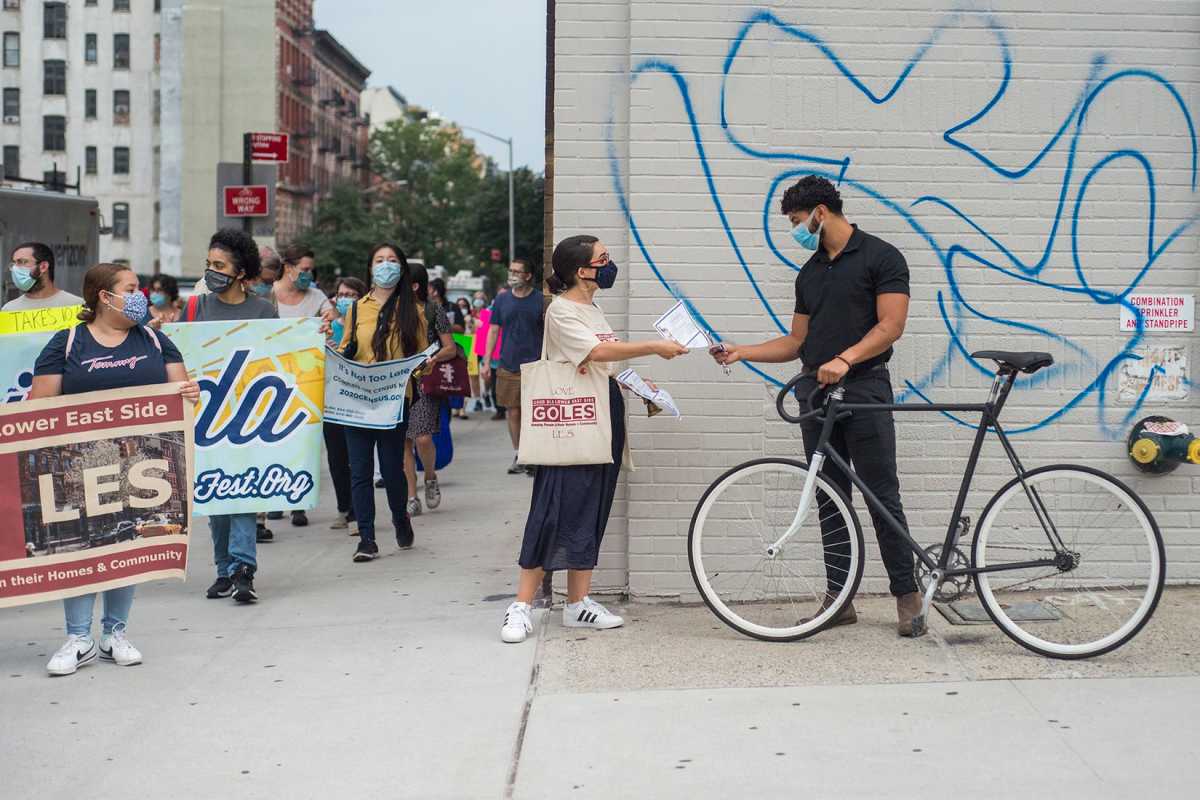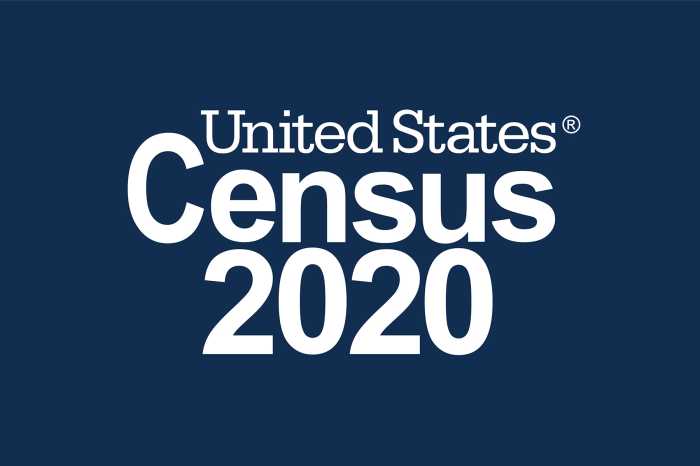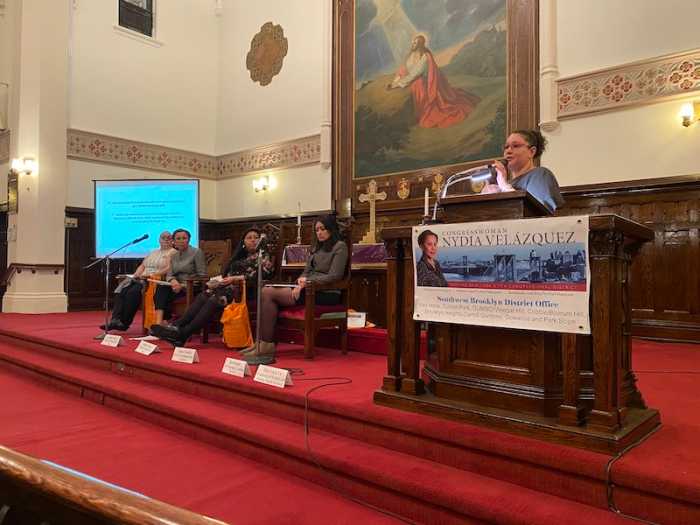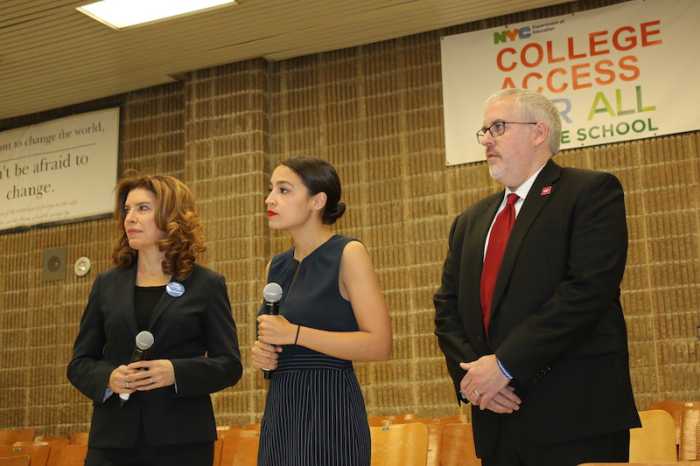The deadline to fill out the U.S. Census is Sep. 30, but much of New York’s population remains uncounted – particularly its low-income neighborhoods. According to the CUNY Mapping Service’s Census Tracking Project, the statewide response rate is 61 percent, compared to the national average of 64.9 percent – as of Aug. 31. If this trend continues, the federal government will drastically cut New York’s funding for education and crucial social services over the next ten years.
Numerous Manhattan elected officials and community leaders gathered at the southeast corner of Tompkins Square Park and marched through the streets of Alphabet City to promote awareness of the Census Wednesday night. The march concluded at Astor Place, where they conducted Census outreach.
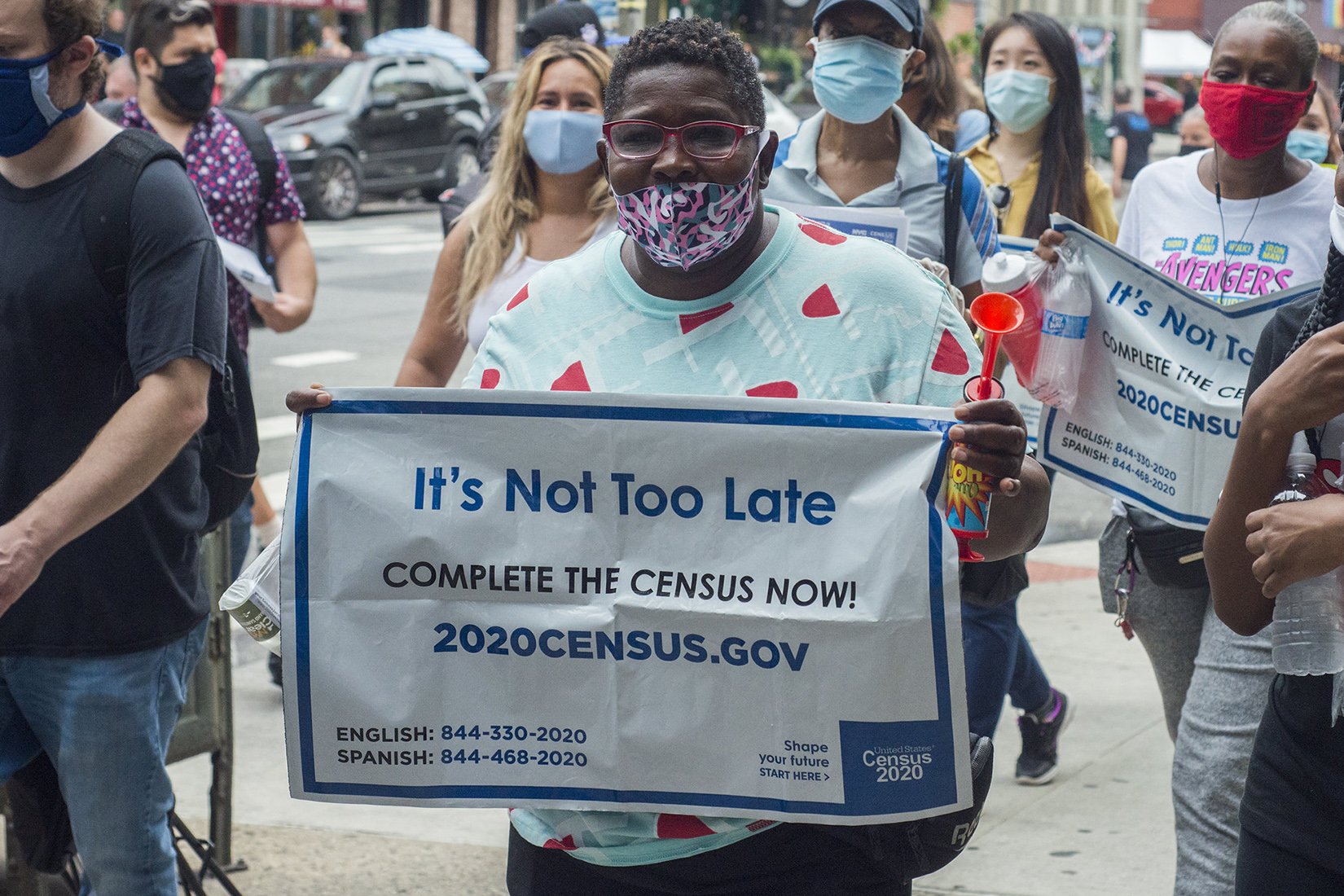
At a press conference before the march, Manhattan Borough President Gale Brewer (D) emphasized that filling out the Census was not just a civic responsibility, but easy to do. “The simplest thing you can do to help your community is to fill out the Census now at www.my2020census.gov,” she said.
District Leader John Blasco (D-East Village, Lower East Side, Midtown East), who emceed the conference, agreed and elaborated. “New Yorkers can fill out 10 questions in under 10 minutes to help shape the next 10 years by filling out the Census. Some of our most vulnerable communities are at stake during this Census count. I’m proud to stand with Rep. Maloney and Council Member Carlina Rivera to urge all to fill out their Census.”
State Senator Brian Kavanagh (D-Lower Manhattan, Brooklyn) further emphasized the importance of filling out the Census, outlining what’s at stake. “The Census provides data that will impact our communities for the next decade,” he said. “It determines how many seats New York gets in Congress; how $675 billion in federal funds is allocated — including funding for our schools, hospitals, senior centers, public transportation, roads, and bridges. Most importantly, our participation in the Census ensures that our voices are heard and our concerns are being addressed. I encourage all New Yorkers to fill out the Census to make sure that New York receives our fair share.”
Assemblymember Deborah Glick (D-West Village, SoHo, TriBeCa) warned of the challenges an undercount would pose for the city, but remained optimistic that they would succeed. “A 2020 Census undercount in our communities will lead to 10 years of federal underfunding, including for our schools, and underrepresentation in Washington,” she said. “With the response deadline moved forward by one month in the midst of a pandemic, we all must respond to the Census as soon as possible. I’m so glad to join my colleagues in raising awareness throughout the community.”
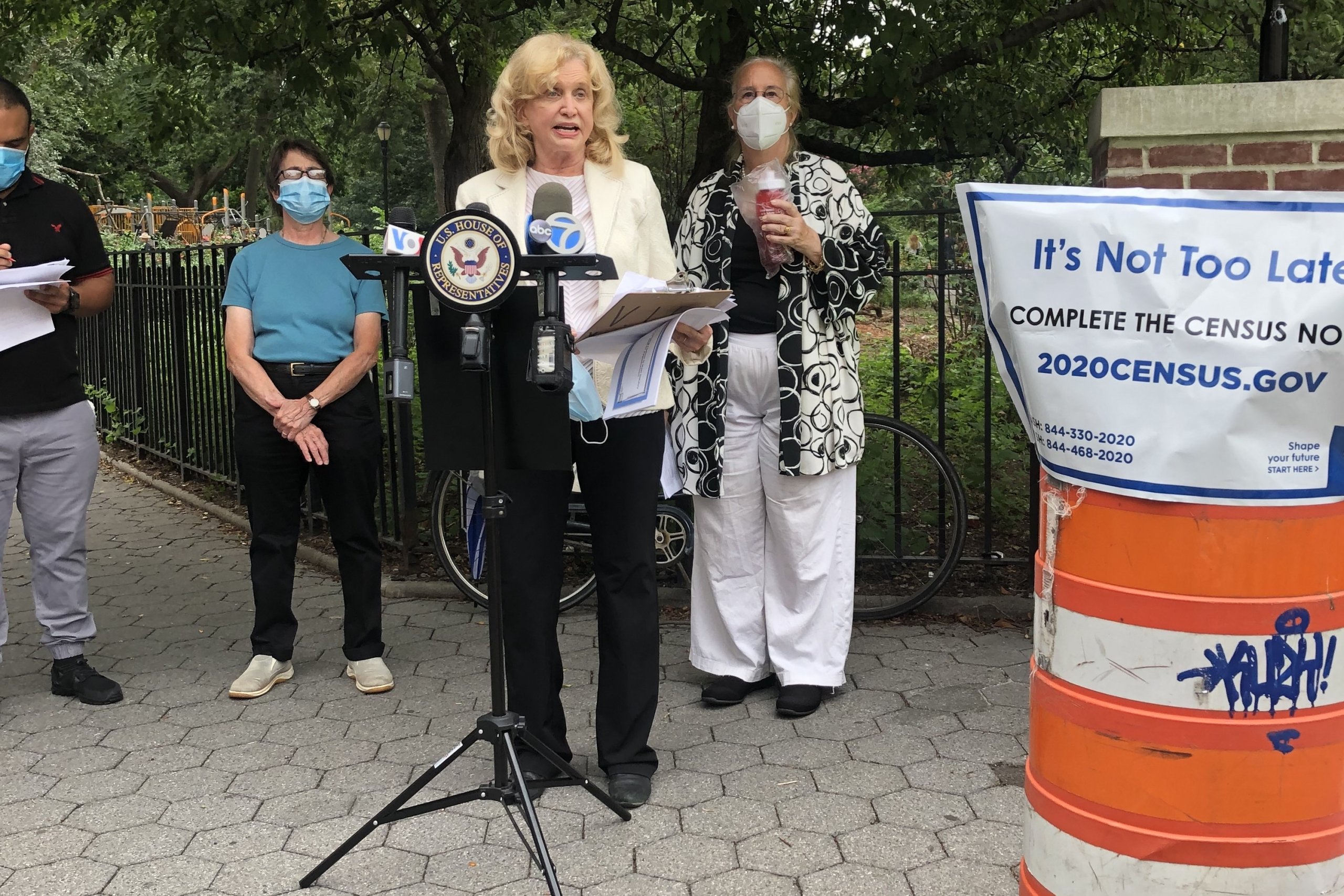
U.S. Rep. Carolyn Maloney (D-East Side, Greenpoint, Long Island City) noted that New York faces a unique obstacle this year: the current presidential administration. She blasted President Donald Trump (R) for politicizing the decennial event, which she called “a pillar of our democracy.”
“The 2020 Census has faced unprecedented attacks and manipulation since the day President Trump took office,” said Maloney. “But his attacks on the Census – including the unconstitutional attempts to add a citizenship question, unprecedented number of political appointees to positions at the Census Bureau, forcing the Census Bureau to rush the Census and deliver data before the end of the year without the 4 month extension that his own administration requested – must not deter New Yorkers from filling out their 2020 Census.”
Marielle Villar Martiney, Senior Manager of Impact and Evaluation at the Good Old Lower East Side (GOLES), agreed.
“It is no coincidence that the Trump Administration cut short the deadline for completing the 2020 Census from October 31st to September 30th. He does not want us to be counted,” she said. “Trump does not want immigrants, Black and brown people, or low-income and working-class communities to get their say in government, to have their voices be heard, and to get the resources that we deserve. But make no mistake, the people of the Lower East Side are here and we will be counted.”
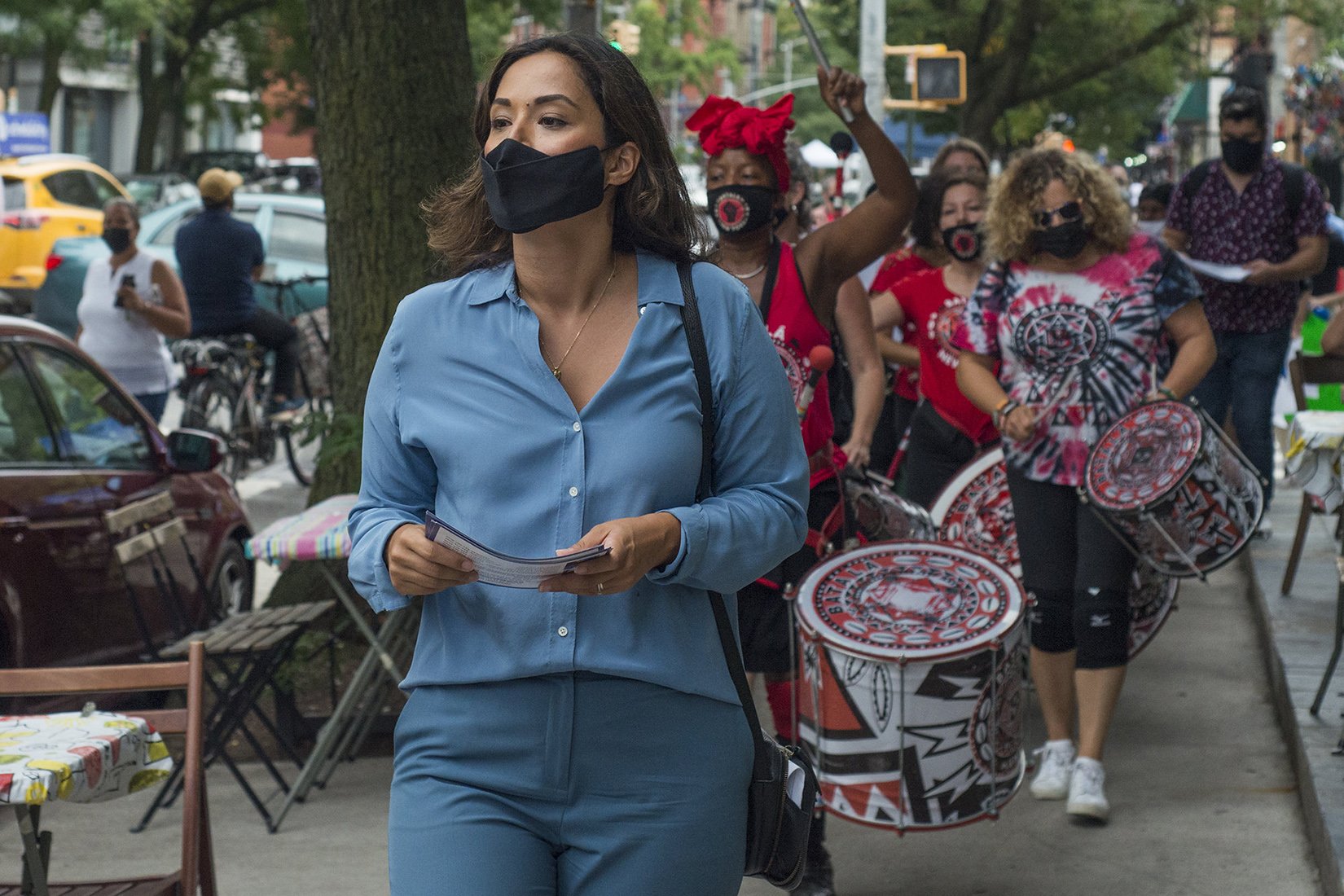
Meanwhile, Councilmember Carlina Rivera (D-East Village, Lower East Side, Murray Hill) told New York County Politics how they could most successfully reach those New Yorkers least likely to be counted in the Census.
“Clearly the pandemic prevented a lot of the in-person outreach and organizing that we wanted to do,” she said. “We knew that the community-based organizations were gonna be critical in reaching undercounted communities. If you’re an immigrant or someone who doesn’t speak English well or at all, and with the rhetoric that’s coming from Washington, there was a lot of fear. We’re gonna have to work a little faster, a little harder, which we’ve been doing and will continue to do through the last hour.”


